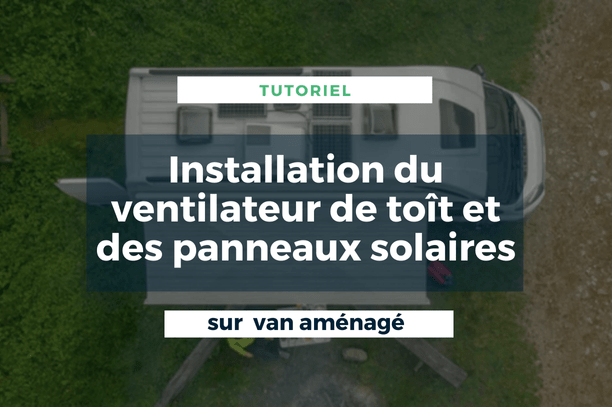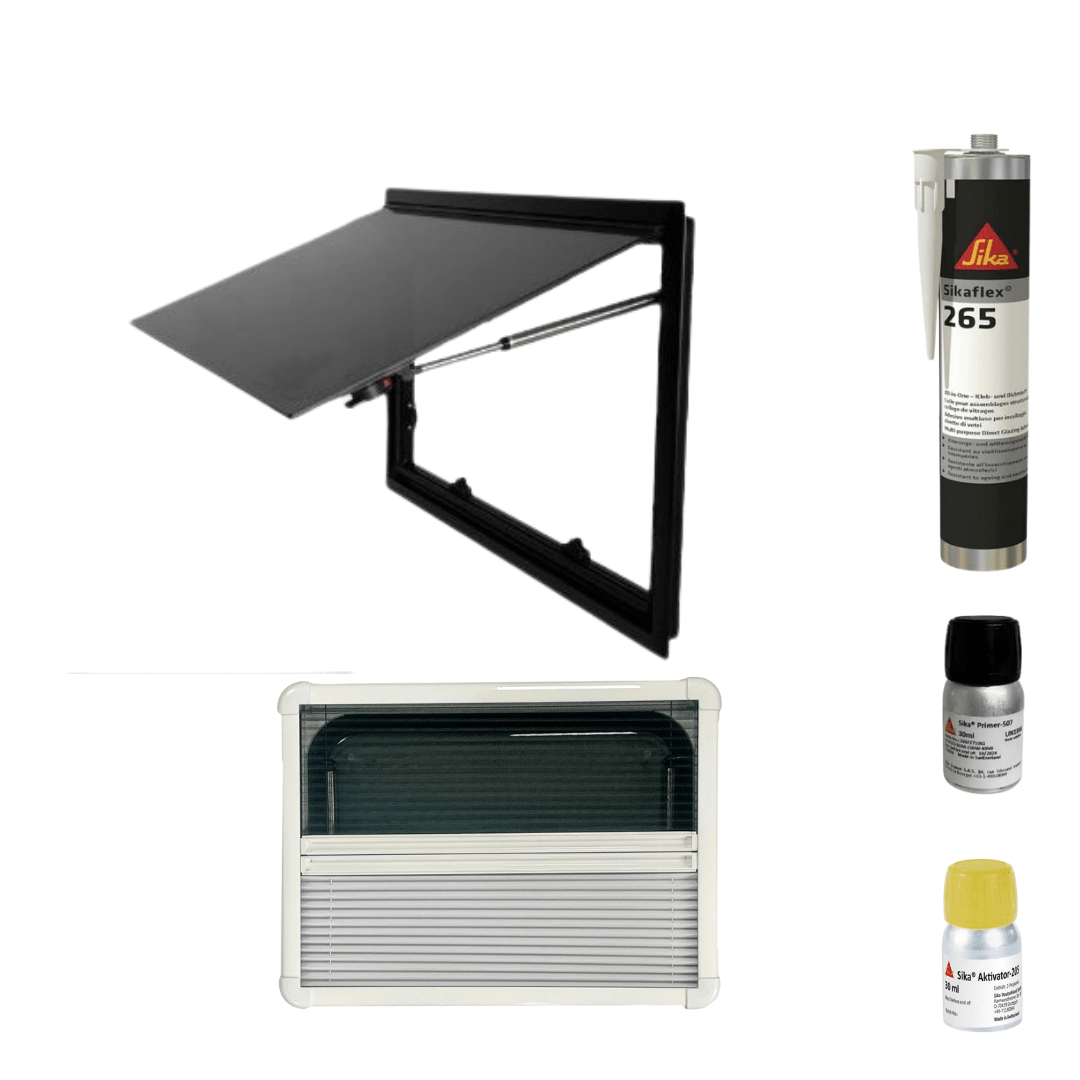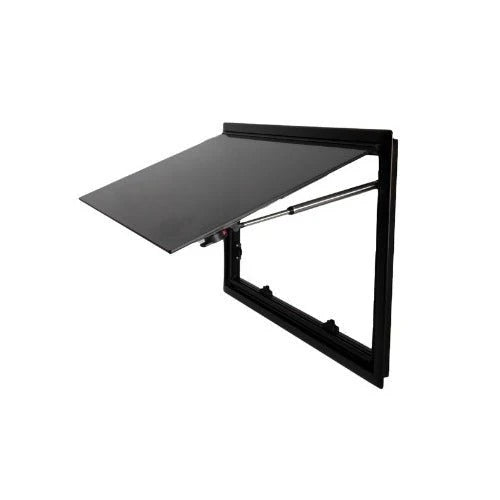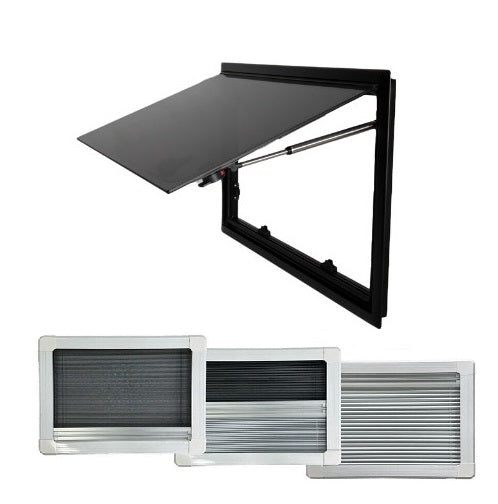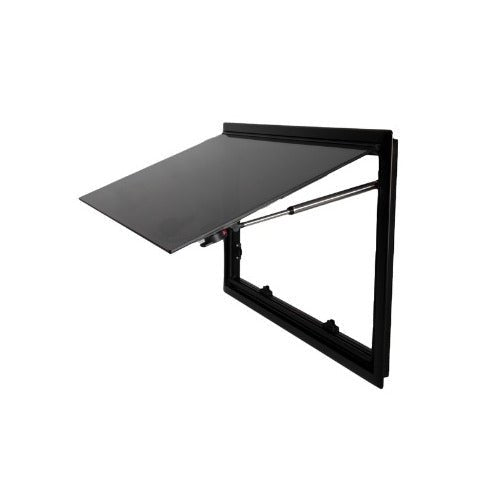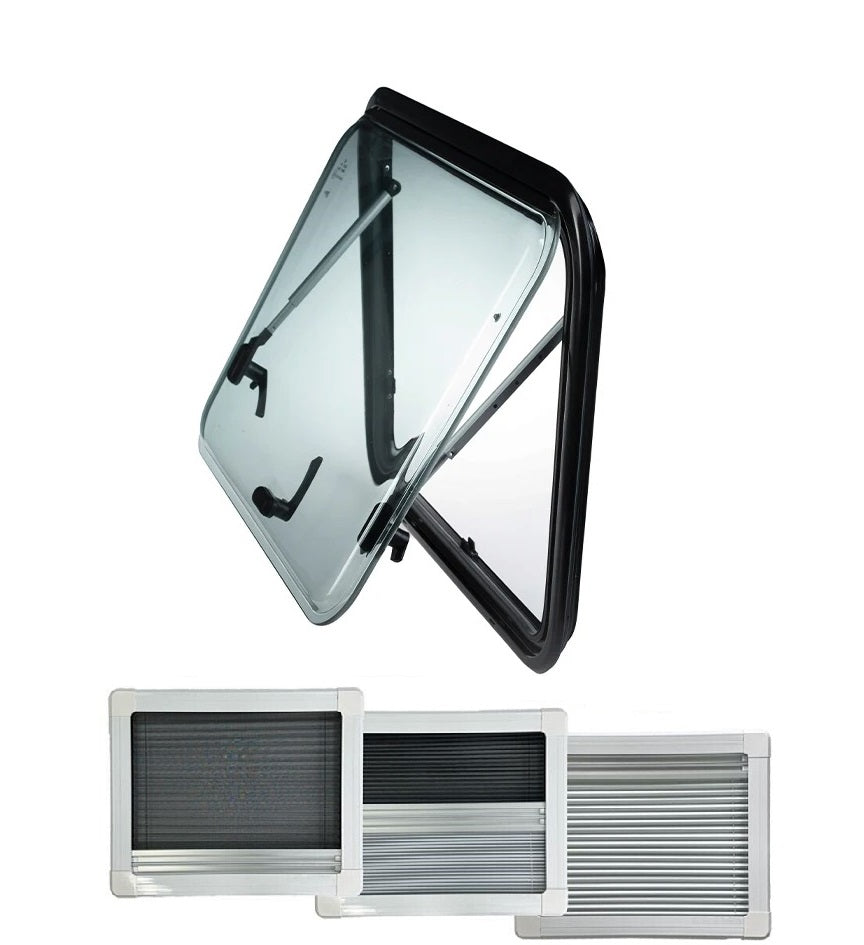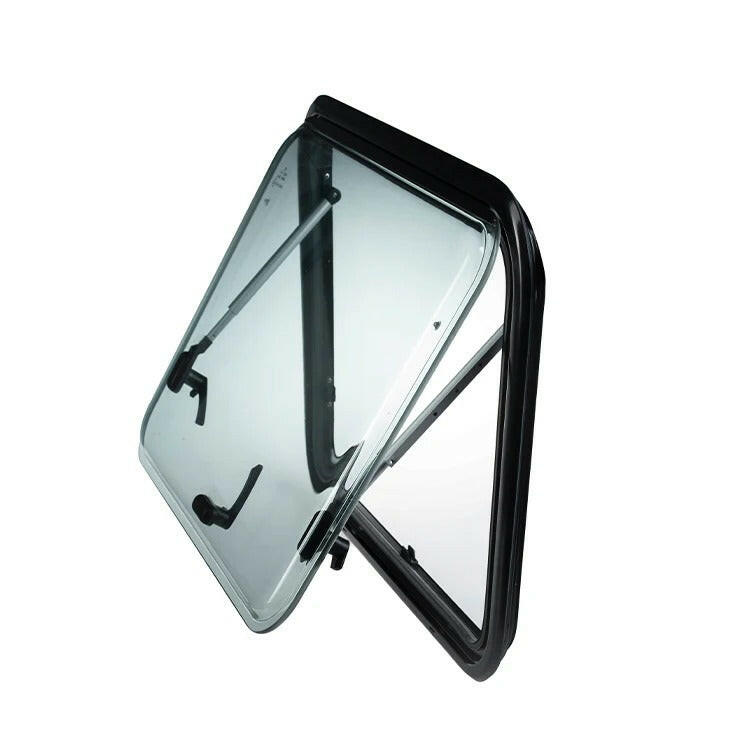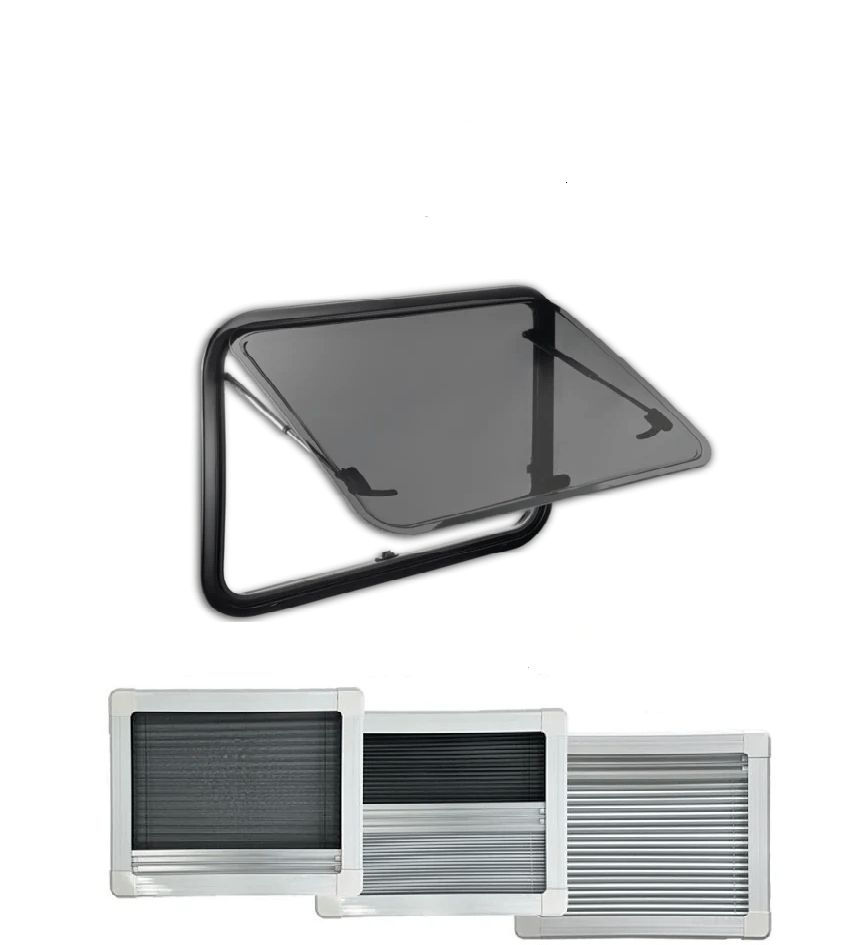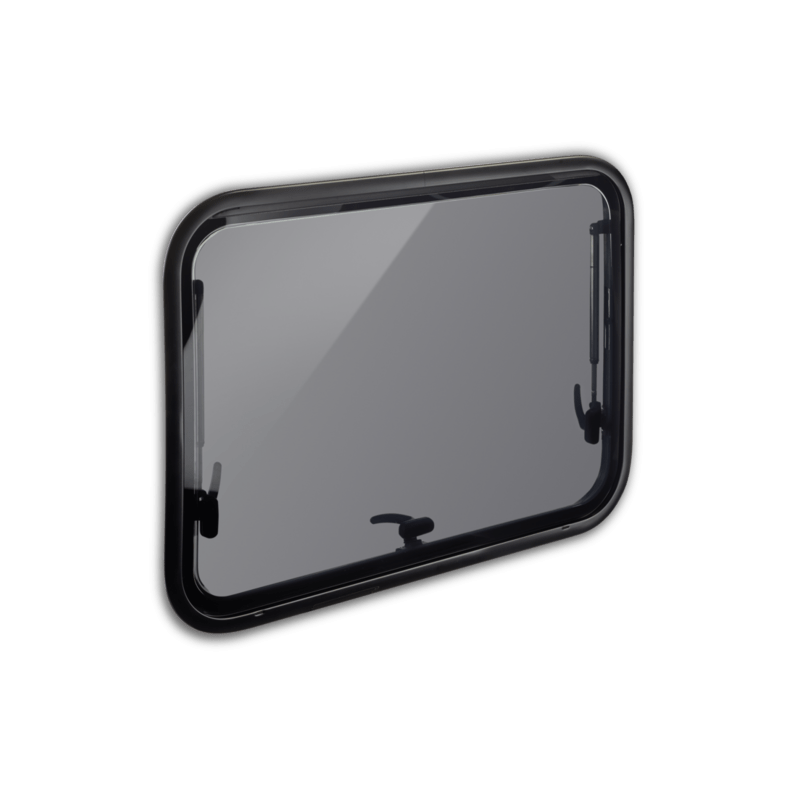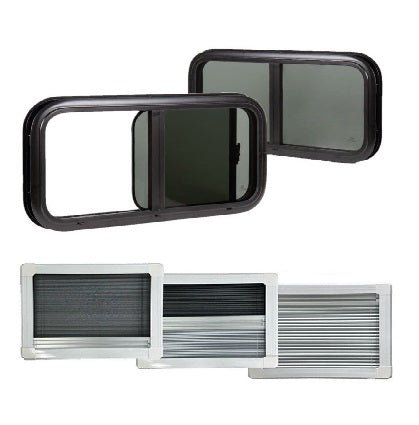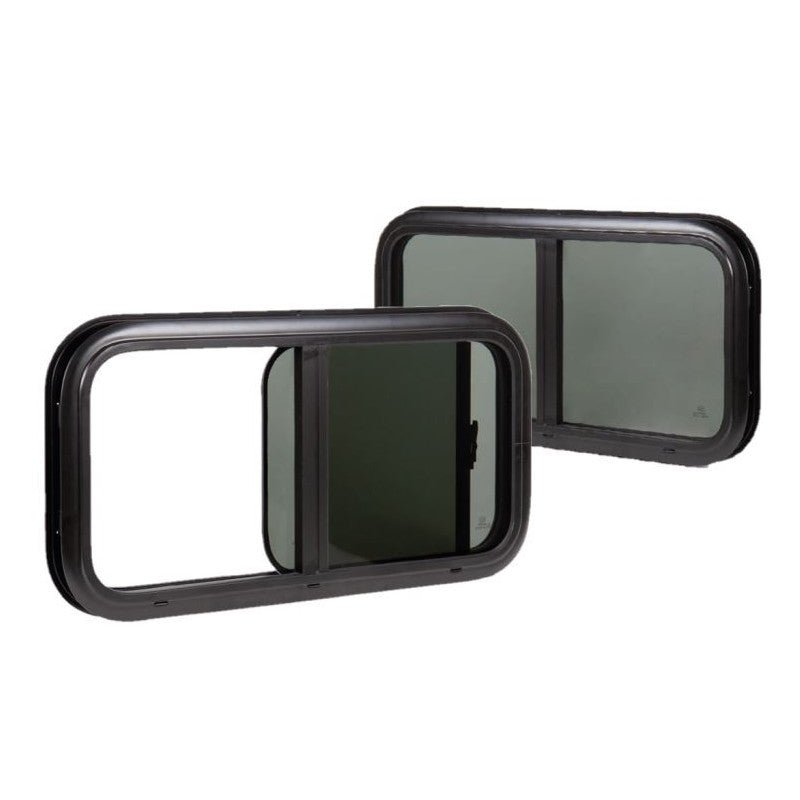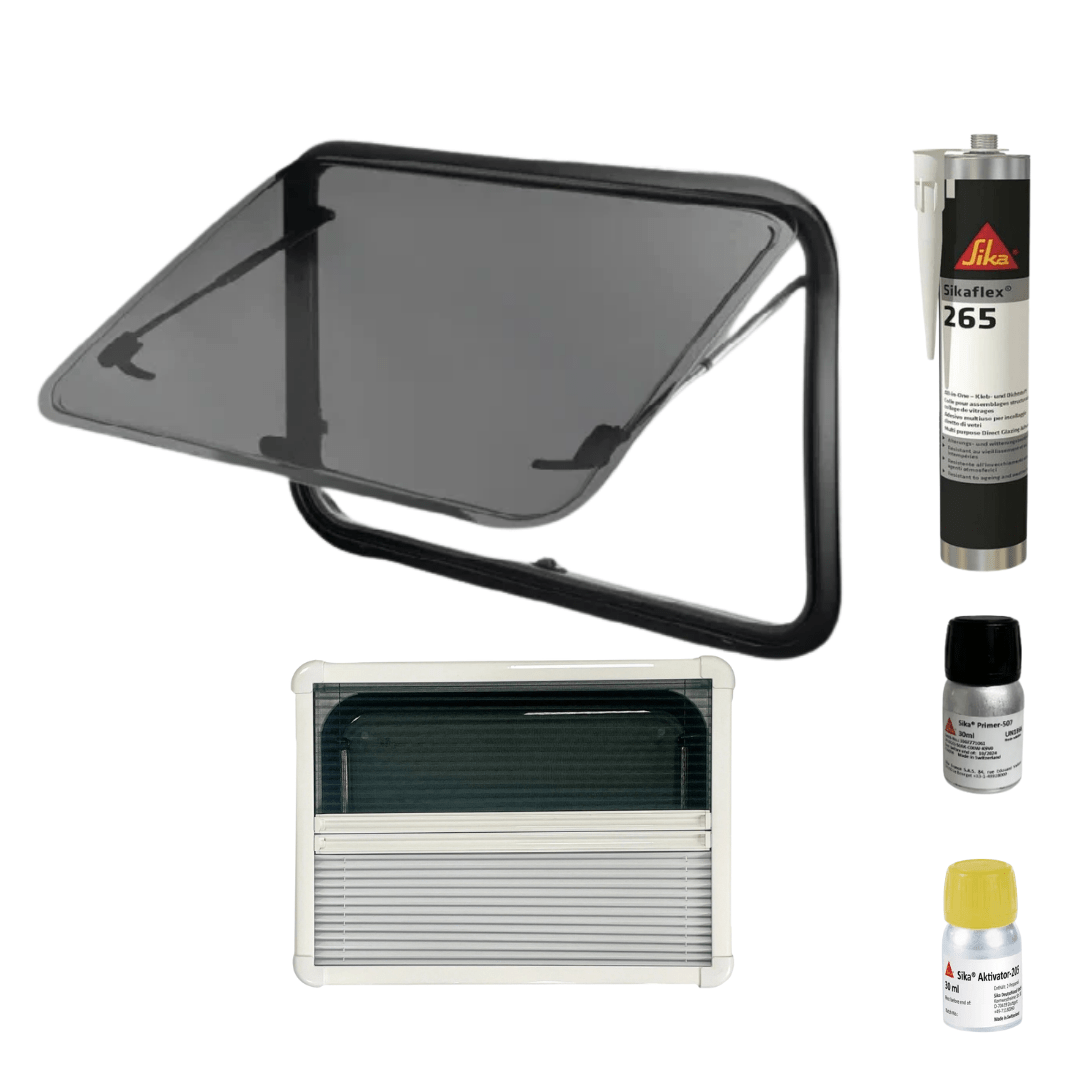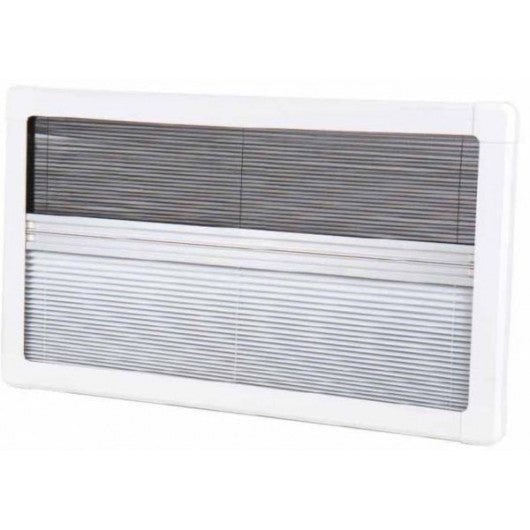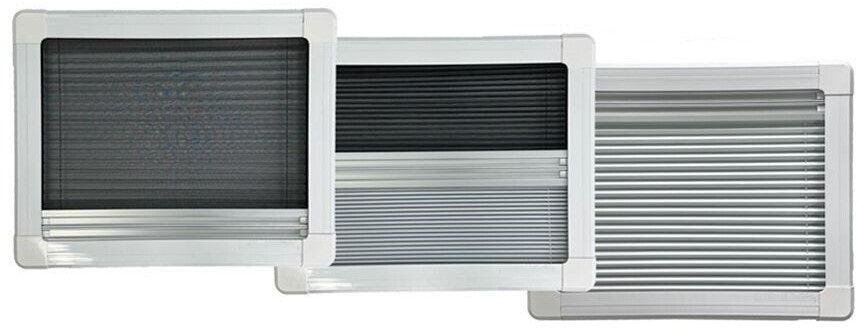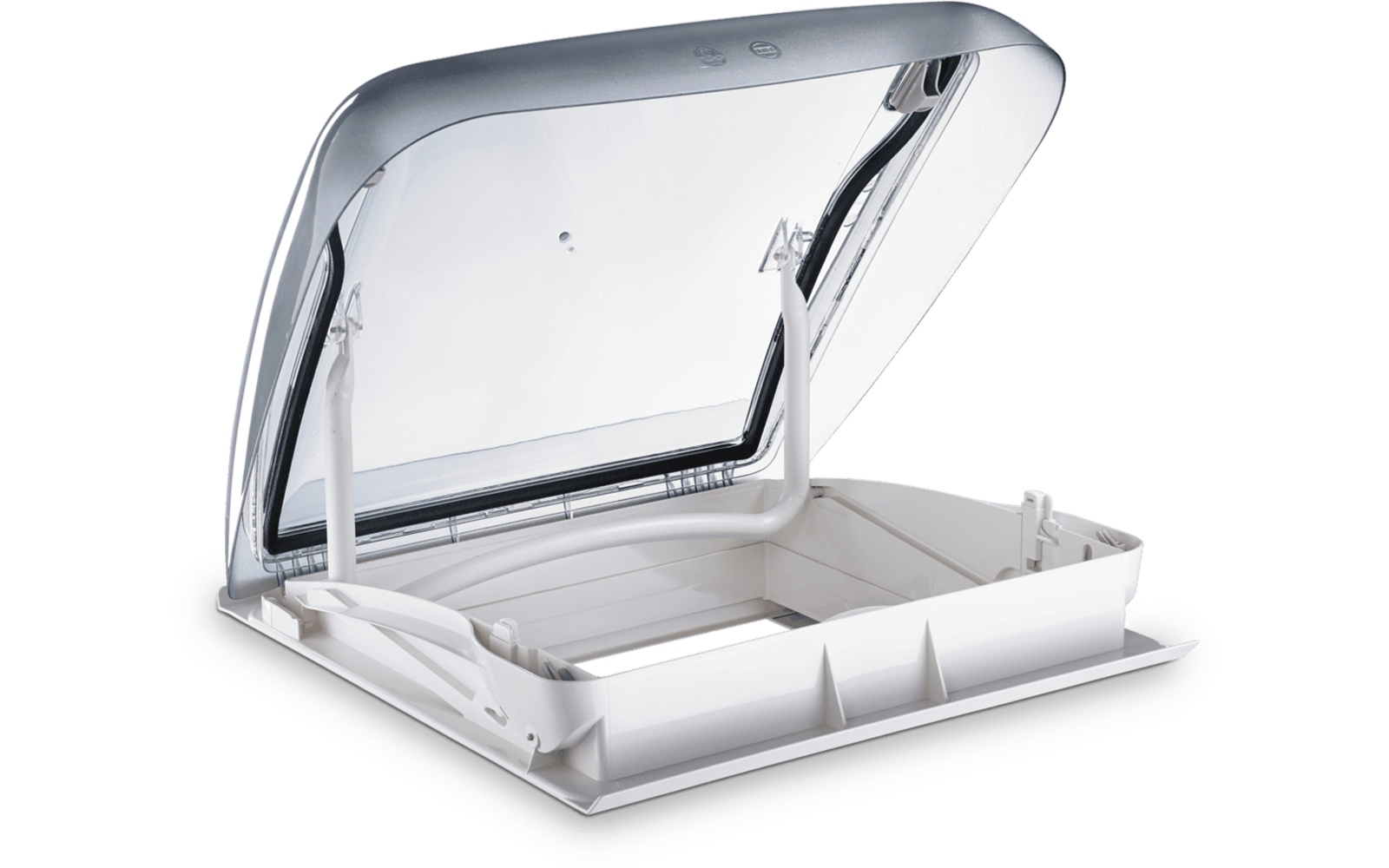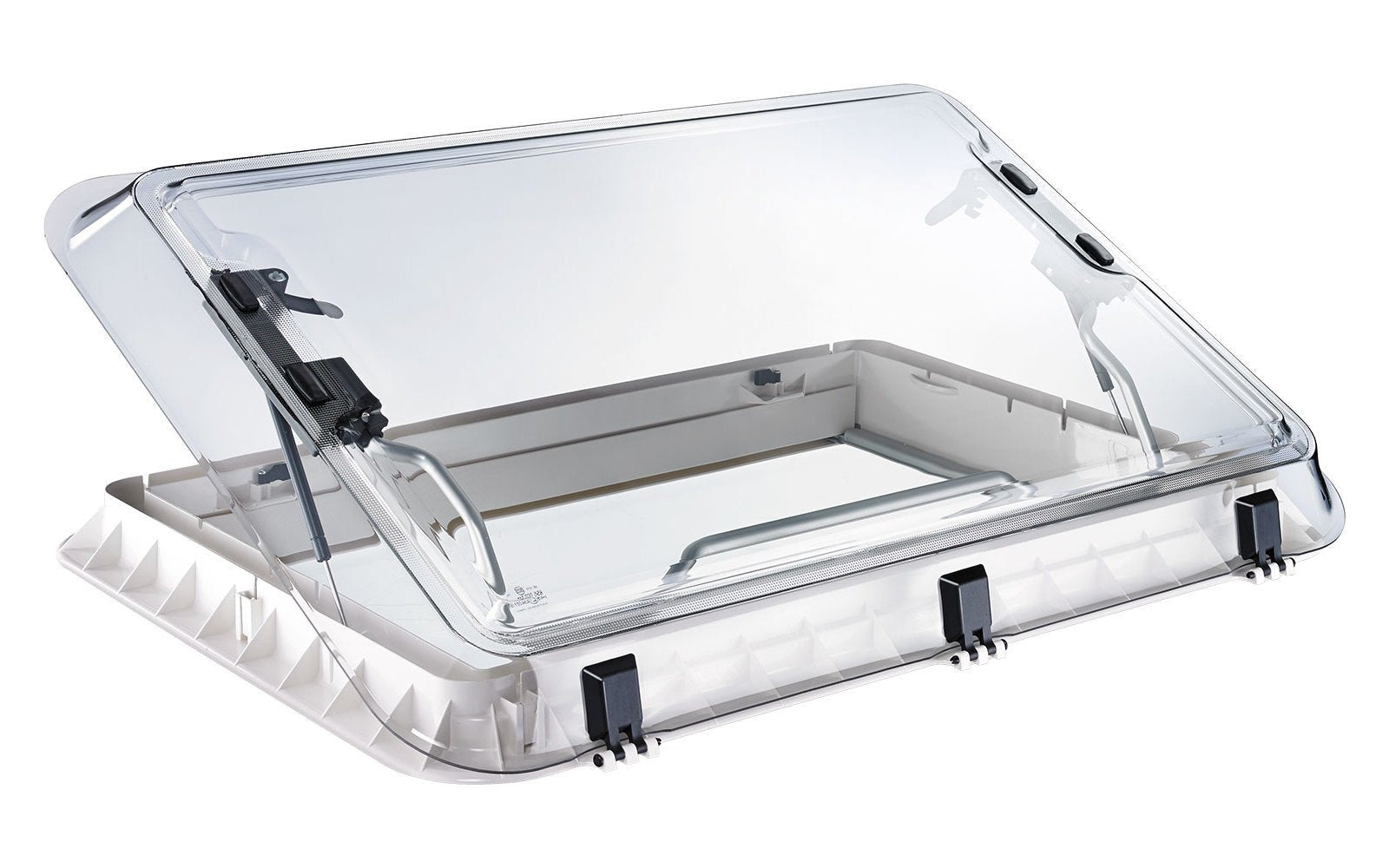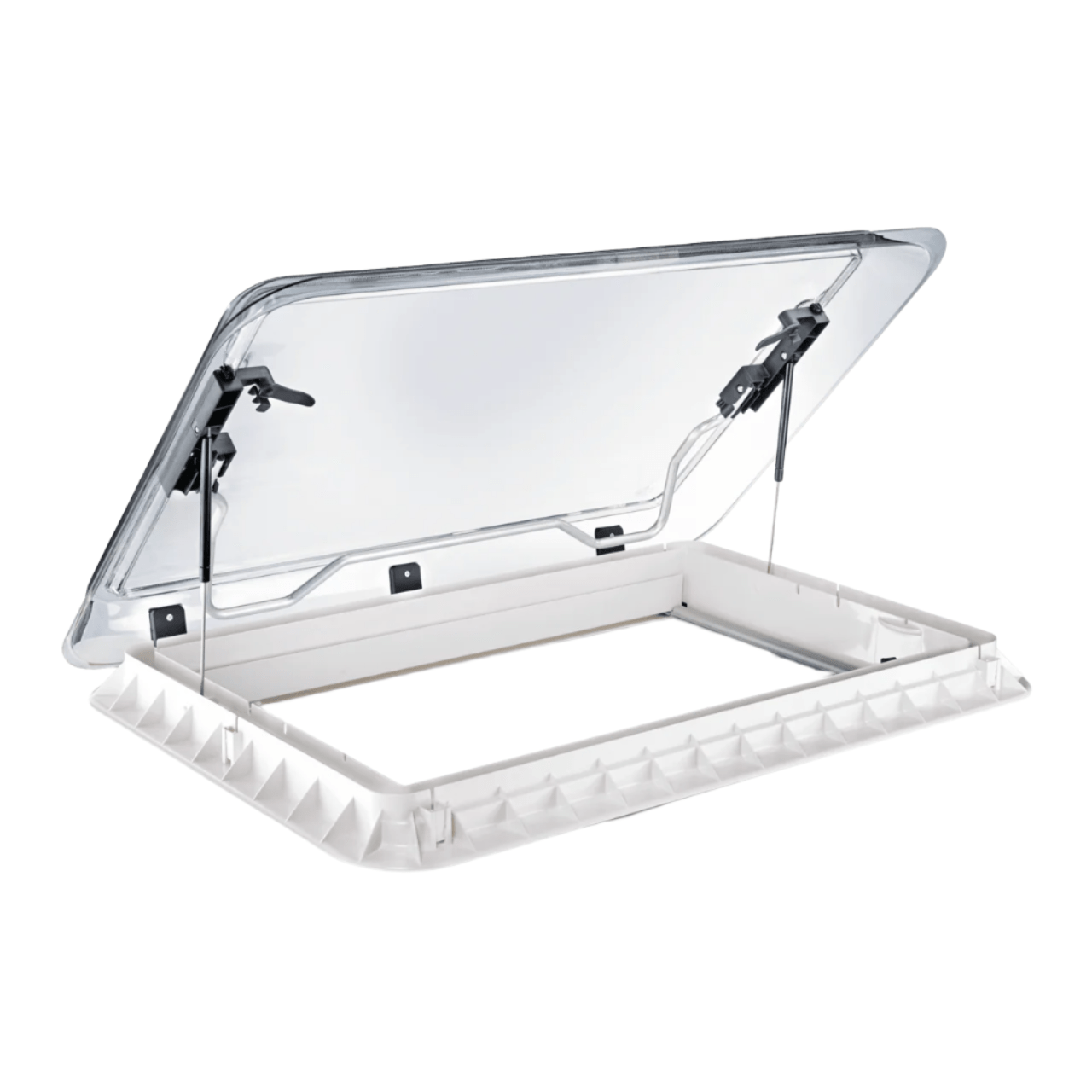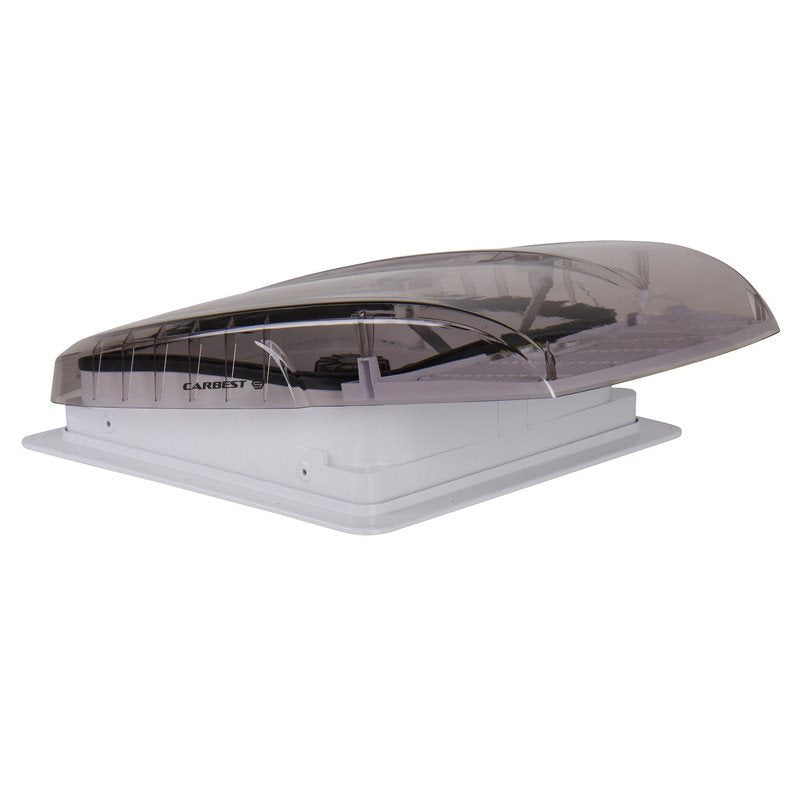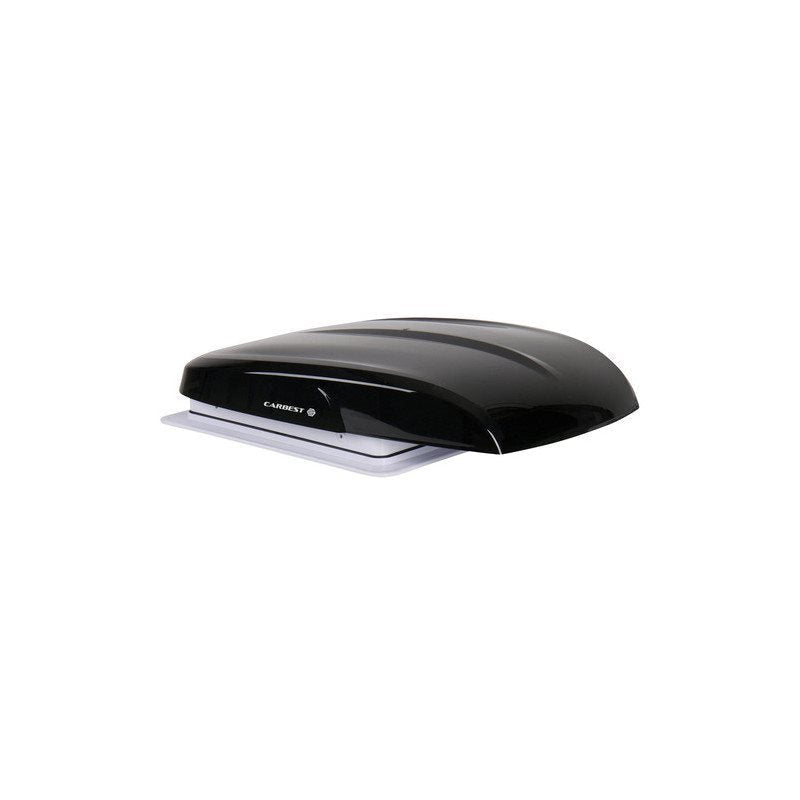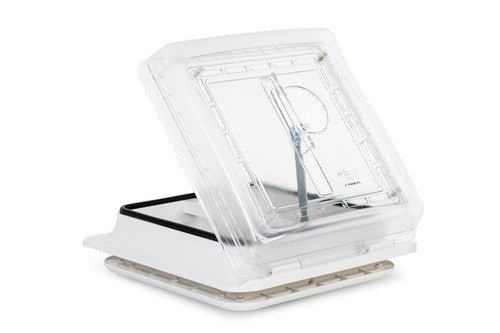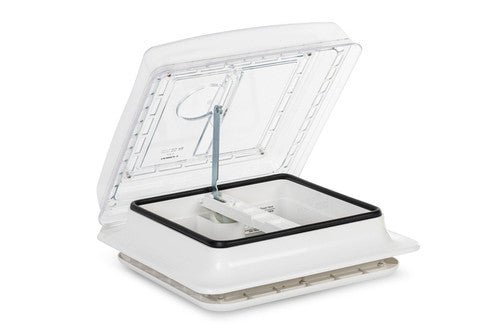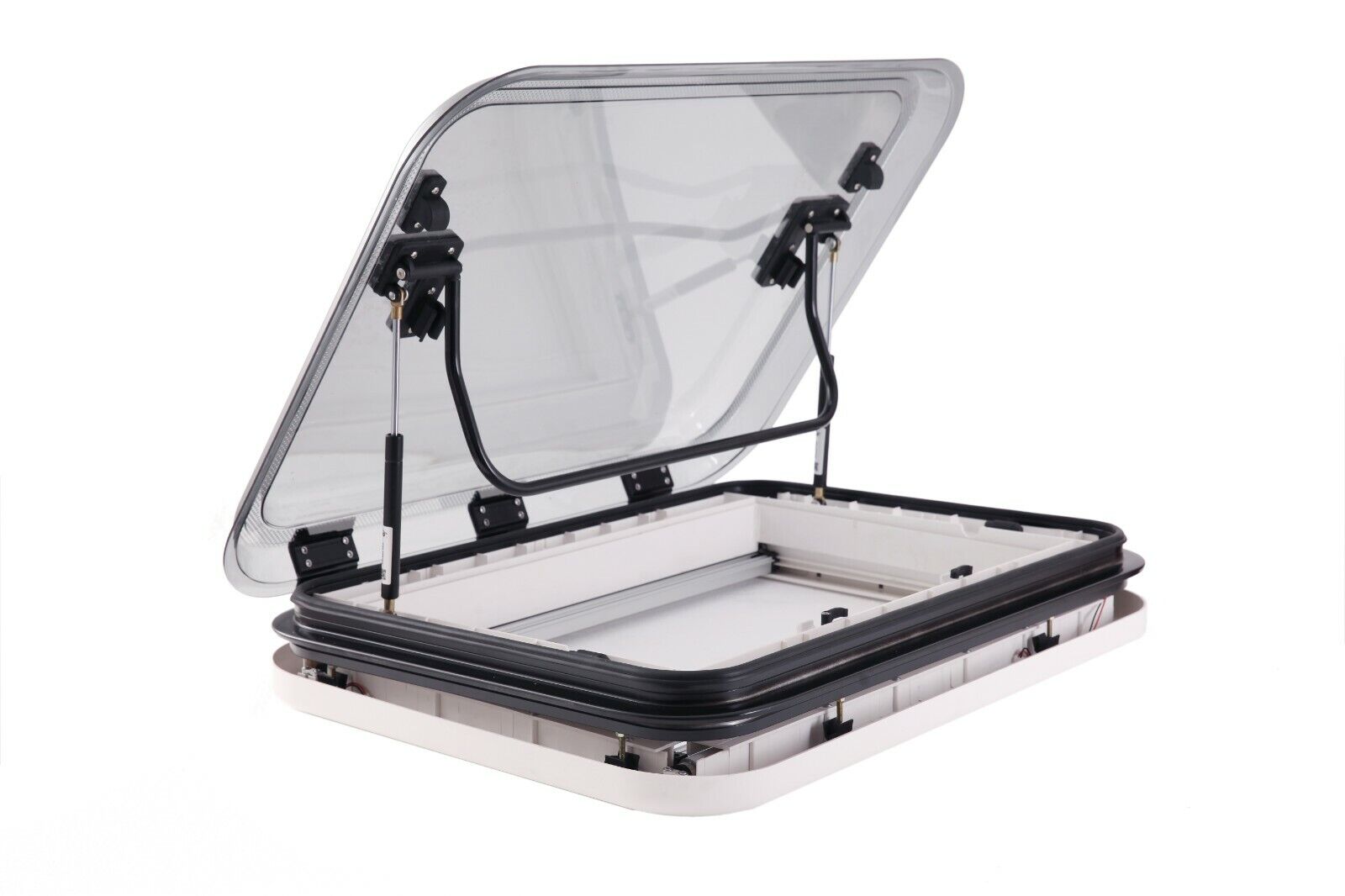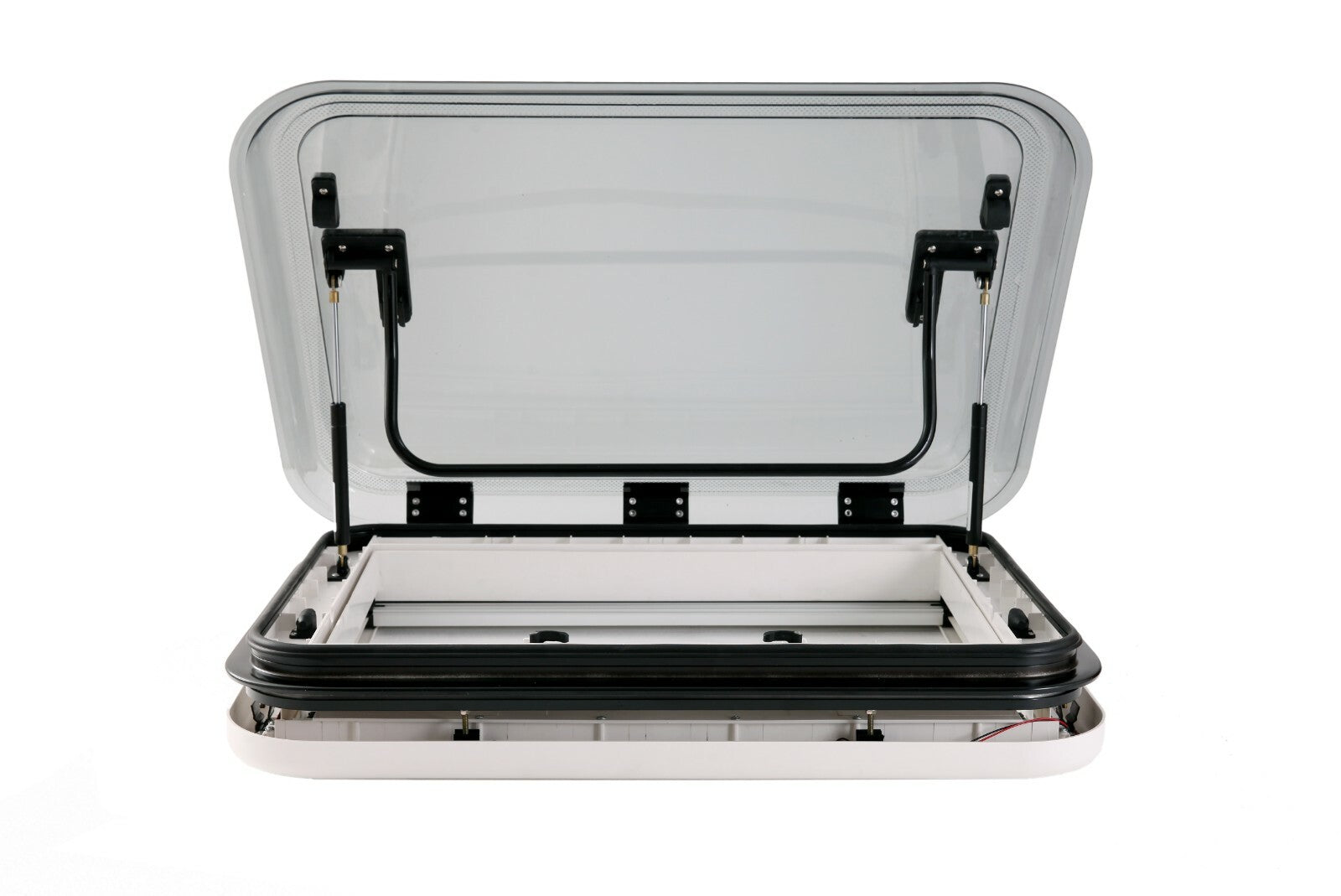How to install a roof fan and solar panels on your camper van: Complete guide
Introduction: Transform your Sprinter van into a camper van by installing a roof fan and solar panels.
In this guide, we explain step by step what you need to successfully complete this essential project for your van conversion.
Note that this mounting method is universal. You can find here our fans in stock and here all our sealants and promotional items.
Our Vanlife conversion experts are here for you! Whether you have a question about our products or are looking for advice to transform your van into a true nomadic cocoon, contact us – we will be happy to guide you!
Necessary materials
- 40 x 40 fan for camper vans
- 200W solar panels
- Aluminum roof rails
- Bolts, nuts, and rivets
- Tools: drill, jigsaw, screwdriver, etc.
Installation steps
Fan choice
We chose to use the 40x40 model with 3 speeds, which is mid-range. A popular choice is the Carbest Vanvent, which is high-end with interesting features including hot air extraction and rain detection.
The 40x40 fan has three speeds, a reversible direction allowing it to suck in or expel air, and a built-in thermostat for automatic activation based on the set temperature. It offers all the basic features needed at about one-third the price of high-end models, perfect for our installation.
Marking and cutting
The fan comes with a foam protector that we can use to position the cut on the roof and mark the cutting lines.
On some first-generation Sprinter vans, there was a section on the roof adjacent to the sliding door where an original fan or passenger air conditioning unit is mounted. This can be a perfect spot to mount the fan without interfering with ribs or other structural elements.
Also, we will install sliding windows towards the rear of the van, so placing the fan here allows sufficient distance to get good air circulation when the windows are open at the back.
After marking with a marker, we removed the template and applied painter's tape along the perimeter to avoid scratches caused by the jigsaw shoe when cutting the hole.
Cutting the sheet metal
Using a step drill bit, we drilled a ½" hole near each corner so the jigsaw can pivot from side to side. We used a fine-toothed metal blade to cut the square with a jigsaw. Cutting sheet metal with a jigsaw is very noisy, so make sure to wear hearing protection.
PRO TIP: To minimize cleanup inside the van, we taped a large garbage bag under our cutting line to catch metal shavings.
Before removing the protective painter's tape, we sprayed semi-gloss white anti-rust paint to seal the bare metal edges. Once the paint was dry, we removed the tape and cleaned the perimeter with a simple cloth.
Frame fabrication
We then cut 2x4cm wooden boards and drilled holes to create a frame for the fan. This frame will be mounted under the fan from the inside, essentially sandwiching the roof wall between the two. It provides additional material for the fan mounting screws to hold onto as well as support for the finishing trim once the ceiling panels are installed.
Sealing and fan installation
We used Sika 521UV adhesive sealant. Another popular sealant choice is Sikaflex 522.
After applying the adhesive sealant, we placed the fan in position making sure to move it side to side so the sealant could spread.
The hinged part is oriented towards the front of the vehicle. This is important because the fan is a perfect square and can fit in any direction. You want the opening to face away from the direction of travel (i.e., forward), as the opposite direction will cause a parachute effect and tear off the cover when driving on the highway if left open.
Fan fastening
While one person holds the wooden frame underneath inside the van, another must apply some self-drilling metal-to-wood screws. We used standard length screws.
Final sealing
Once all screws are in place, we taped the perimeter of the fan and generously applied exterior window sealant around the holes and empty spots. The goal here is to reduce any chance of leaks.
To finish the fan installation, we removed the cellophane and admired the result!.
Installation of roof rails and solar panels
Rather than using standard roof rails, we used low-profile aluminum profiles 150cm long. Unlike newer models, the 2005 Sprinter does not have original mounting points. We therefore used three M8 rivet nuts to fix each rail. Using a drill bit, we drilled a hole large enough for the threaded rivet to fit perfectly.
Installation of threaded rivets
It is not necessary to buy a special tool for threaded rivets; you can use a bolt with a different thread than the rivet, some nuts larger than the bolt (we used M10 nuts), and some washers.
Once all parts are assembled, simply insert the assembly into the hole and tighten the bolt using a hammer drill while holding it straight with the nuts using a wrench. By tightening gradually, you will start to feel the rivet compress.
Once the tightening resistance increases again, you can simply loosen the bolt and the rivet will stay in place. Be careful not to overtighten the bolt, as this could damage the rivnut lobes once compressed and make it difficult to remove.
Solar panel fastening
Using 4cm aluminum profile bars, we cut them to length to have four pieces 2 feet long that we can fix on the short sides of the panels. We made oblong holes on the mounting sides on the rails by measuring two equidistant points, drilling holes slightly larger than an M8 bolt, cutting the material between the two holes with a jigsaw, and smoothing the edges. It is not absolutely necessary to make slots in the holes, but we thought it would give a bit more adjustment possibility during mounting.
Since the length of the angle aluminum is shorter than the width of the panels, we just roughly centered it and transferred the hole locations with a marker. Using the same drill bit as before, we used our hand drill to drill the holes we marked on the solar panels.
We made sure the holes were aligned by placing the rivets through the aluminum angle and into the solar panels before fastening. Then, we fixed the rivets using the rivet tool.
If you have never used a riveting tool before, it takes a few pumps on the handle before there is enough tension to deform the mandrel tail, which is the piece that protrudes and goes into the tool.
We fixed the rest of the brackets with rivets and got a fairly solid mounting solution.
Cleaning rust before final solar installation
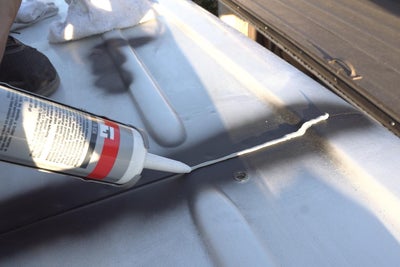
Before we could finish installing the roof rails and panels, we had to treat all the surface rust on the roof. There are seams where body sections overlap and are spot welded together, which is a major water leak problem on some vans. Also, for our van, it seemed someone had scraped something with low clearance and scratched the paint in some spots. So we used a wire wheel to remove the surface rust and sprayed a layer of rust inhibitor.
We applied a bead of the same sealant used during the fan mounting, Bostik 70-03, on the seams and smoothed it with our finger. Since the sealant can be painted, a nice fresh coat of paint should give it a relatively OEM look.
Rail mounting
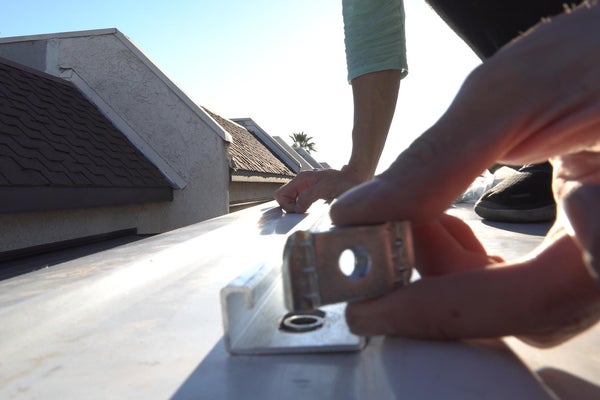
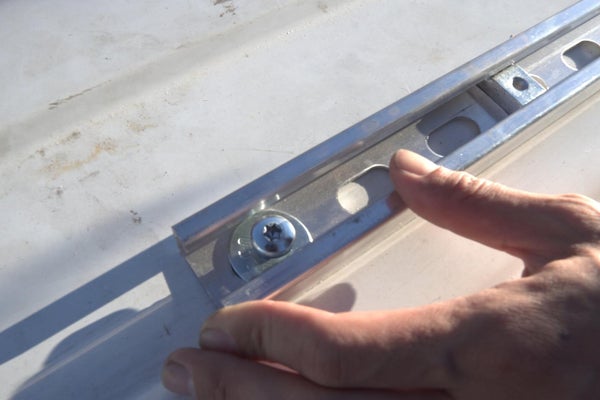
Once we positioned the rails on the rivet nut locations, we slid the channel nuts that will be used to mount the solar panels before tightening the rail mounting bolts.
We used a large diameter fender washer for the mounting bolts to ensure we have enough surface area to provide good clamping force and blue Loctite on the threads to ensure the bolt does not loosen due to road vibrations.
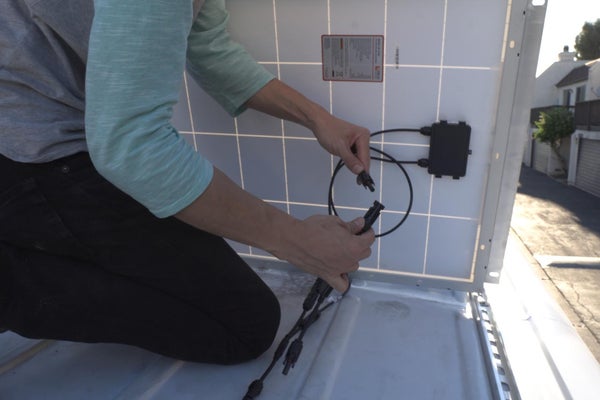
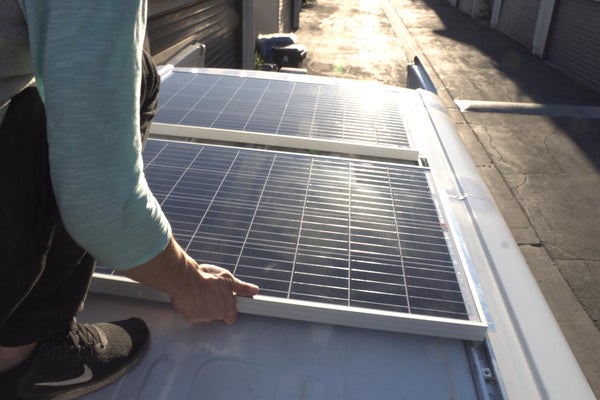
Once the rails were fixed to the roof, we placed the panels on top aligning the oblong holes on the brackets with the channel nuts. We used a parallel cable harness adapter to connect the two solar panels and routed the output connectors between the two panels.
Mounting and solar panels
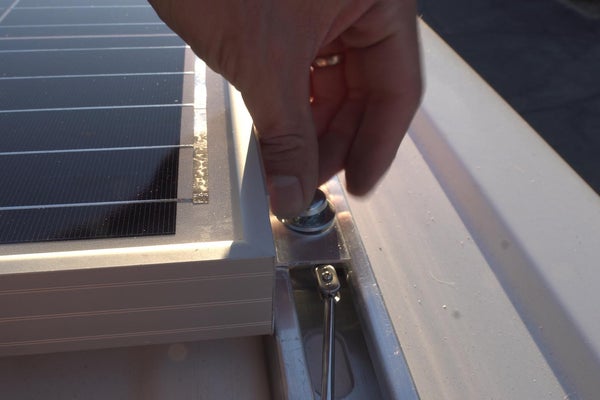
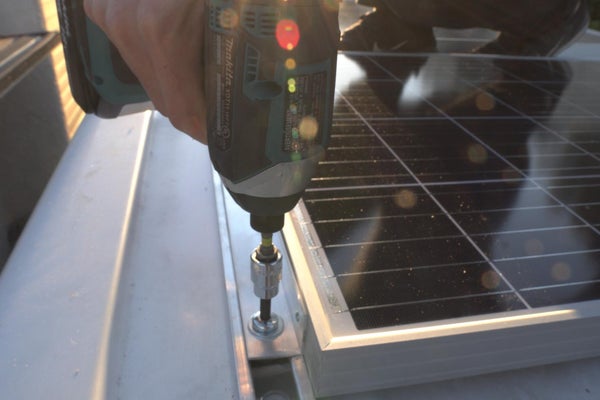
Since the mounting bolts were a bit short, we used a magnet to hold the channel nuts high enough for the bolts to catch some threads. We also used blue Loctite on these bolts and tightened them with an impact wrench.
Cable gland installation
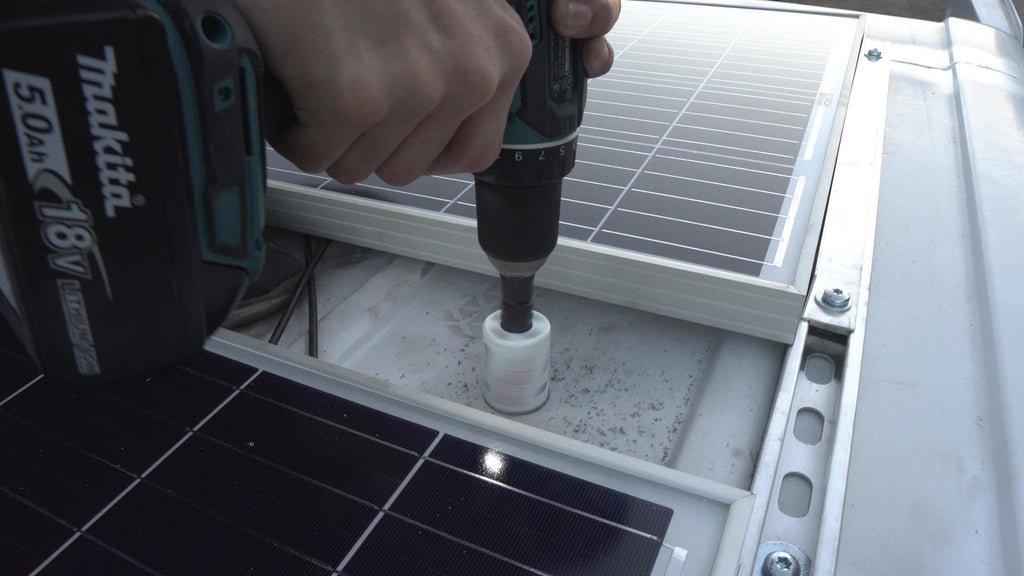
We chose to place the electrical area towards the middle of the loading area, so placing the cable gland between the two solar panels was the best location for our installation. We used a 1.25" metal hole saw, cleaned the edges with a file, and sprayed the raw metal edges with paint.
Sealing and mounting the cable gland
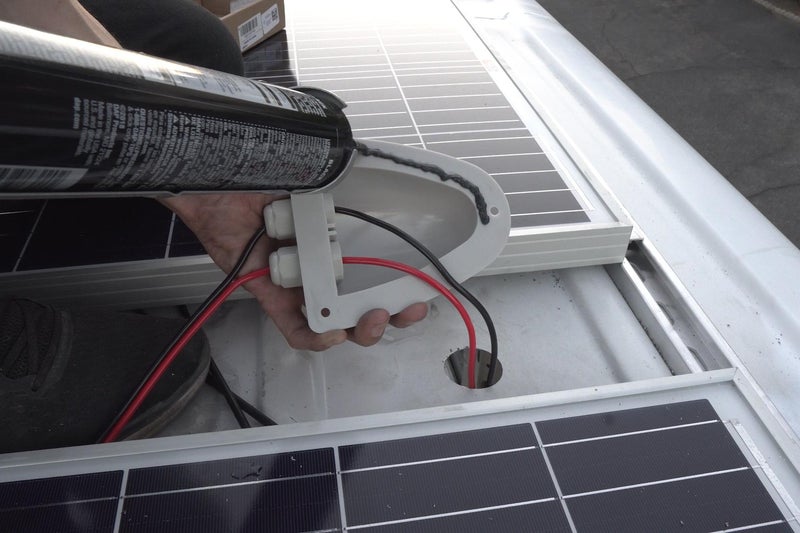
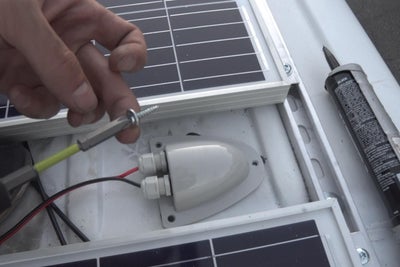
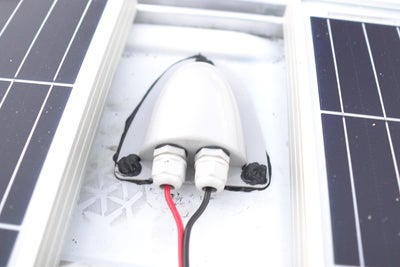
We installed MC4 connectors on 12 gauge wire to connect to the parallel harness and passed the wires through the cable gland. We will cover the electrical setup in more detail in another article!
To seal the contact surface, we generously used silicone sealant along the flange and used self-tapping metal screws to fix it to the roof.
Admire the work!
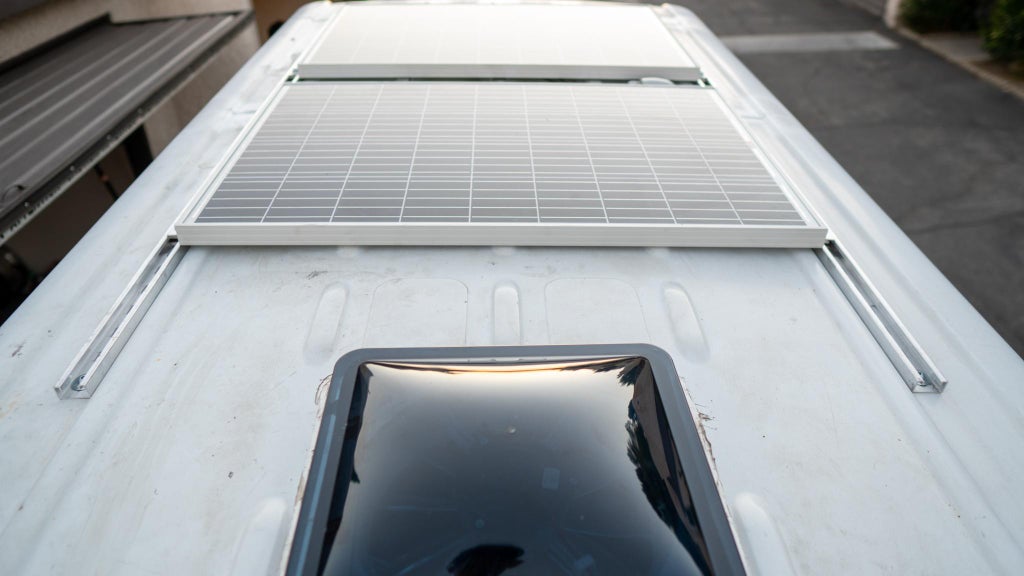
And there you go! The installation was a bit laborious but in the end, it is a valuable investment.
If you liked the project, don't forget to share it. Comments and feedback are always welcome.
Necessary materials to install a roof fan and solar panels on a camper van
- 40 x 40 fan for camper vans
- 200W solar panels
Aluminum roof rails - Bolts, nuts, and rivets
- Tools: drill, jigsaw, screwdriver, etc.

